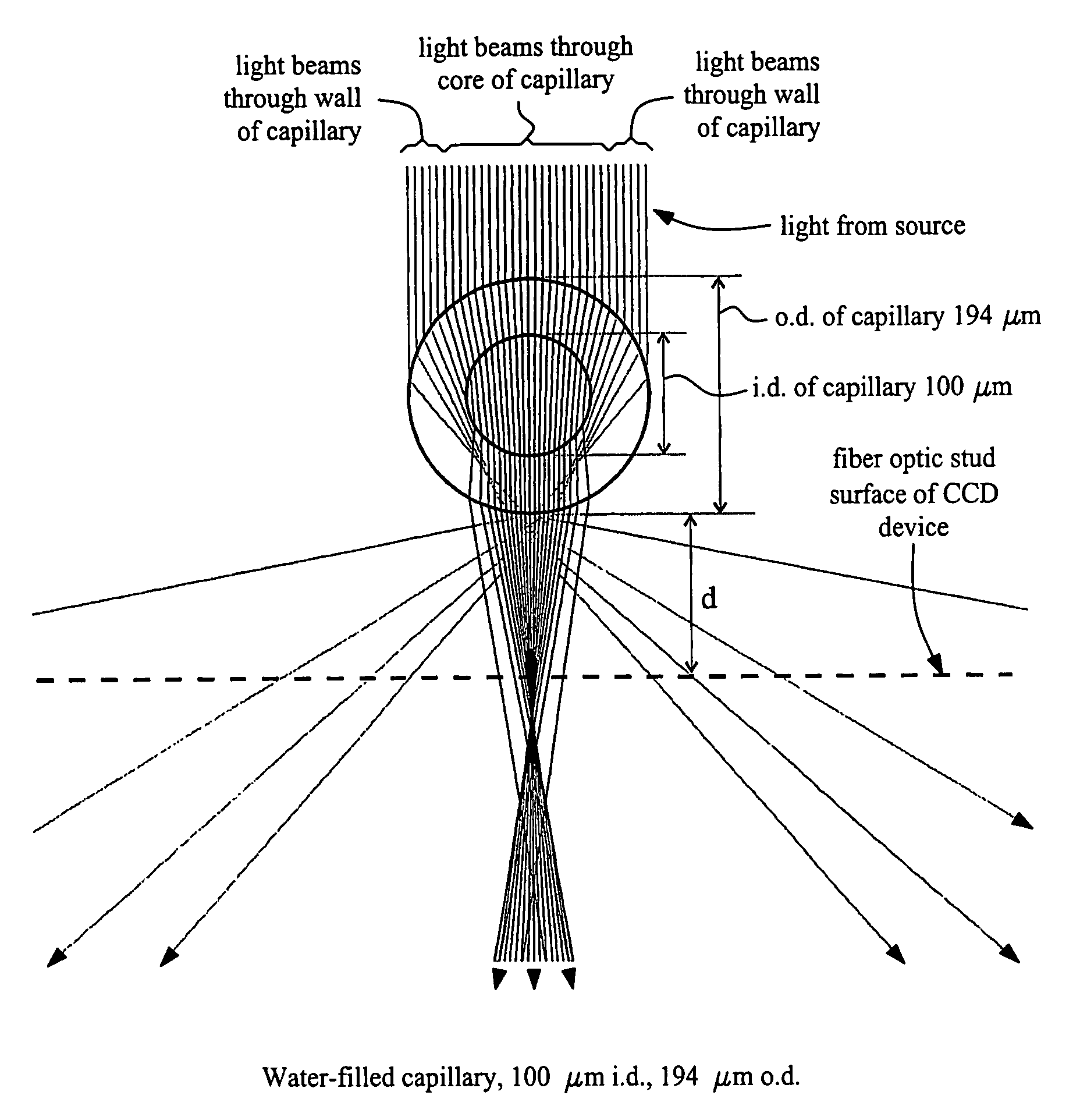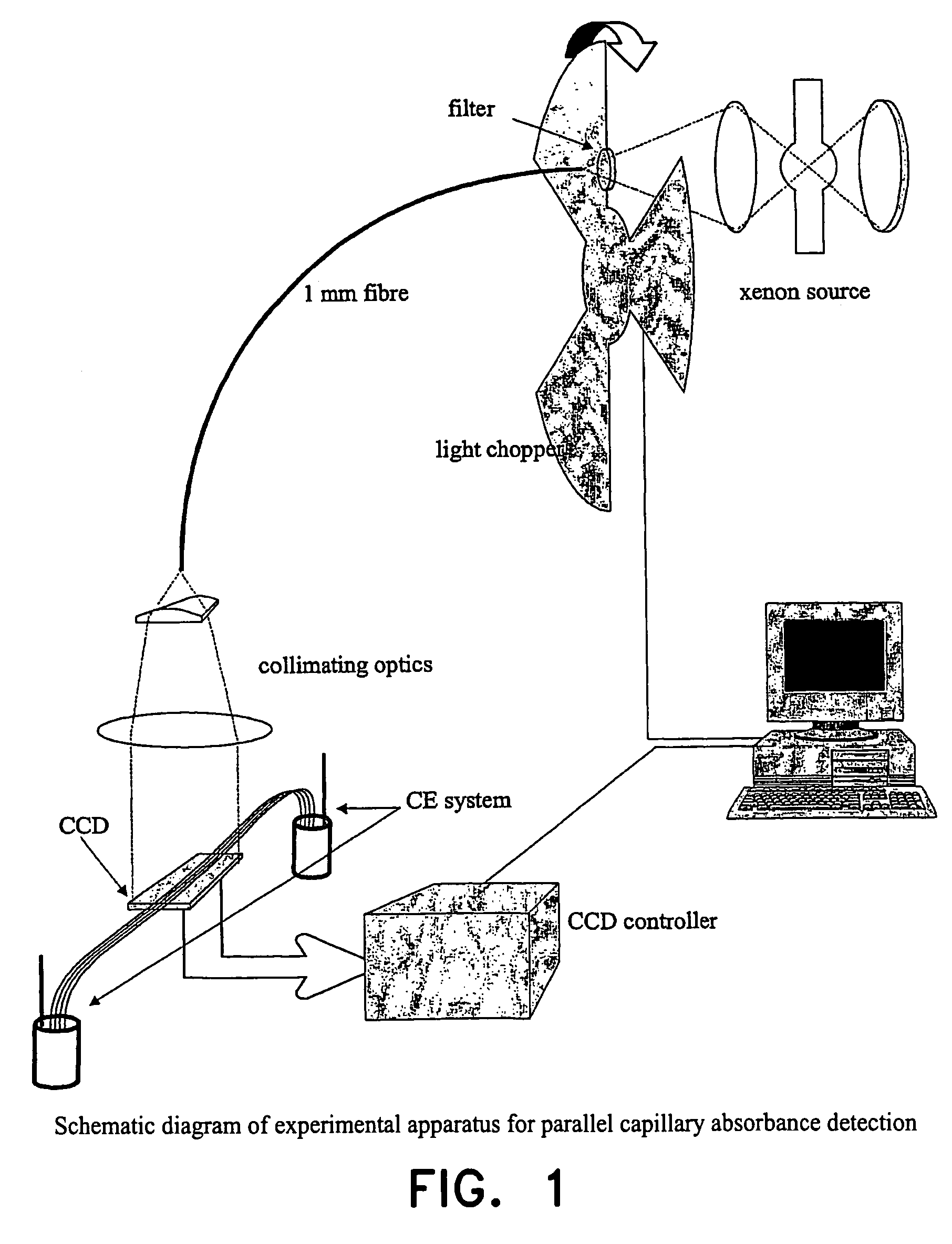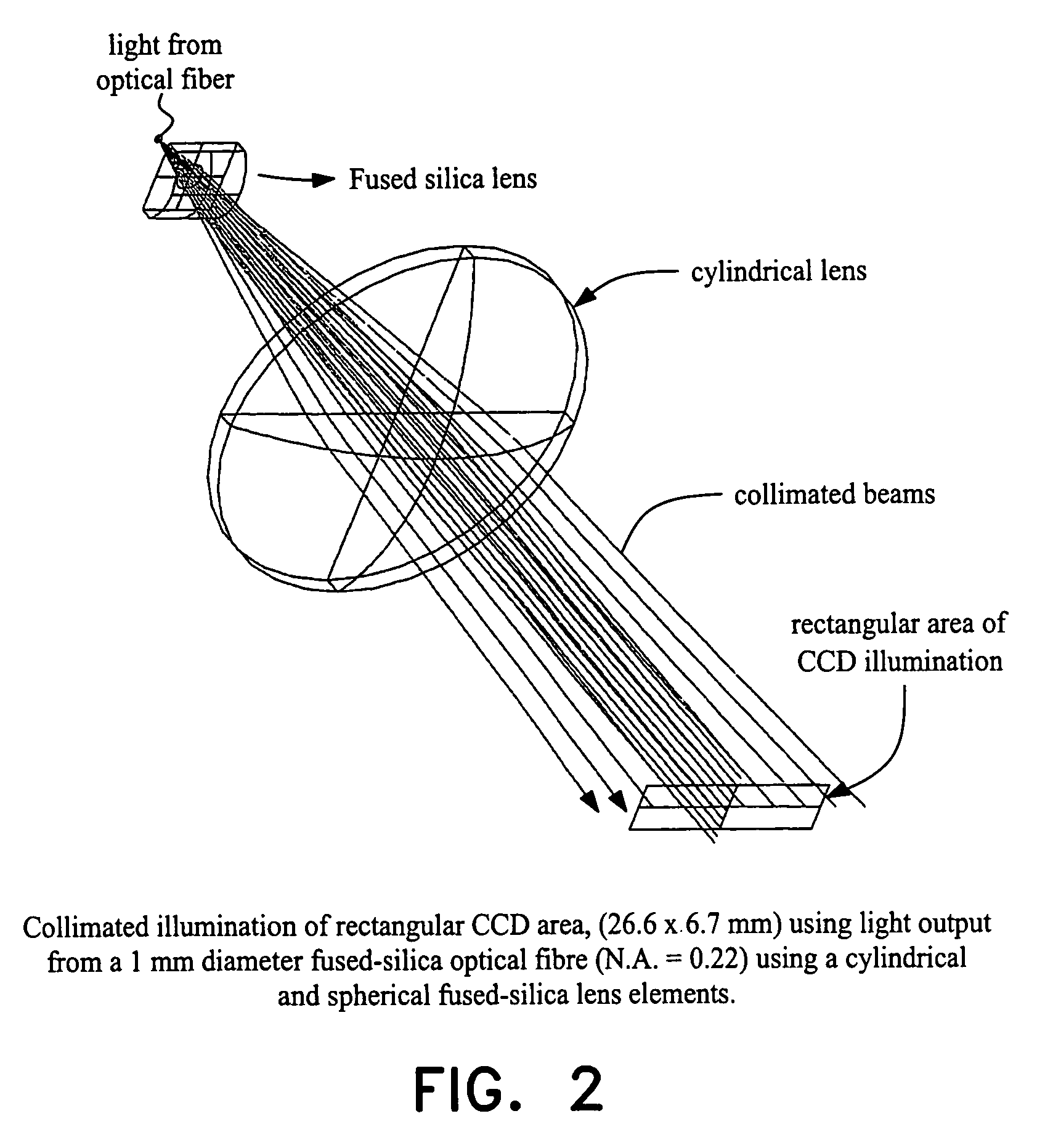Optical assembly and method for detection of light transmission
a technology of optical assembly and light transmission, applied in the field of optical assembly, can solve the problems of limited application of fluorescence detection, limited detection range of absorbance detection, and limited application of absorbance detection, and achieve the effect of improving separation
- Summary
- Abstract
- Description
- Claims
- Application Information
AI Technical Summary
Benefits of technology
Problems solved by technology
Method used
Image
Examples
example 1
[0122]The experimental setup is shown in FIG. 1. The output from a 75 W xenon lamp is launched into a single 1 mm diameter fused silica fiber. The light output from the fiber is shaped and collimated using cylindrical and spherical fused silica lens elements (FIG. 2) to illuminate the rectangular area of the CCD. The CCD chip used is EEV CCD 30-11 and is thermostatted and controlled by a system designed and built by York Electronics Center; it has 1024 by 256 active pixels, each 26 μm square, with a total active area of 6.7×26.6 mm. The CCD chip has a fiber optic stud (faceplate) that protects the CCD surface. The fiber optic stud is not UV transparent, so a UV phosphor is coated onto the surface of stud to make the detector sensitive to a wide wavelength range from NIR to below 200 nm. The charge accumulated on the CCD is read out in a series of snapshots; to prevent image smearing a light chopper ensures that the CCD is not illuminated during the readout period. An exposure rate o...
example 2
[0133]
TABLE 1Table showing, for vessel with circular outer and inner crosssections, minimum values of ratio of the outer wall to detector distance dand the outer diameter of the vessel o.d. (d / o.d.) in order to obtain spatialseparation between core and wall beams. Values are shown as a functionof ratio of inner and outer diameters of the vessel (i.d. / o.d.) for a rangeof solvents and vessel materials. Entries x indicate no spatialseparation possible.i.d. / o.d.i.d. / o.d.i.d. / o.d.i.d. / o.d.0.200.250.330.50Water / silicax2.01.00.5Hexane / silica1.61.00.60.4Dichloromethane / silica0.60.50.40.2Water / polycarbonatexx2.10.5Water / flexible clear0.50.50.50.4tubing (Tygon chemfluor367)
[0134]Values of refractive indices used in ray tracing analysis are: silica (1.458), water (1.333), hexane (1.375), dichloromethane (1.424), polycarbonate (1.585), Tygon chemfluor 367 (1.34). Other common reversed phase HPLC solvents, often used in admixture with water, are methanol (1.329) and acetonitrile (1.344): these a...
example 3
[0136]An example of feedback control is the use in a CE experiment for stopping the sample in the detection window, by turning off the voltage when it is detected as having migrated to the center of the window (see FIG. 13). After stopping, the subsequent broadening of the sample peak due to diffusion is monitored as a function of time. Analysis of the change in peak variance with time enables the diffusion coefficient to be determined. The hydrodynamic radius of the sample molecule may then be calculated using Stokes law. Combination of the diffusion coefficient with the mobility, obtained from the time taken to reach the window under a given field strength, enables the charge on the analyte to be deduced. Any starting peak shape is acceptable, since convolution of the peak with a Gaussian enables the Gaussian component of the peak broadening to be extracted. Whilst the example shows peak broadening measured over a period of 30 minutes, data quality is such that dif...
PUM
| Property | Measurement | Unit |
|---|---|---|
| wavelength | aaaaa | aaaaa |
| wavelength | aaaaa | aaaaa |
| wavelength | aaaaa | aaaaa |
Abstract
Description
Claims
Application Information
 Login to View More
Login to View More - R&D
- Intellectual Property
- Life Sciences
- Materials
- Tech Scout
- Unparalleled Data Quality
- Higher Quality Content
- 60% Fewer Hallucinations
Browse by: Latest US Patents, China's latest patents, Technical Efficacy Thesaurus, Application Domain, Technology Topic, Popular Technical Reports.
© 2025 PatSnap. All rights reserved.Legal|Privacy policy|Modern Slavery Act Transparency Statement|Sitemap|About US| Contact US: help@patsnap.com



